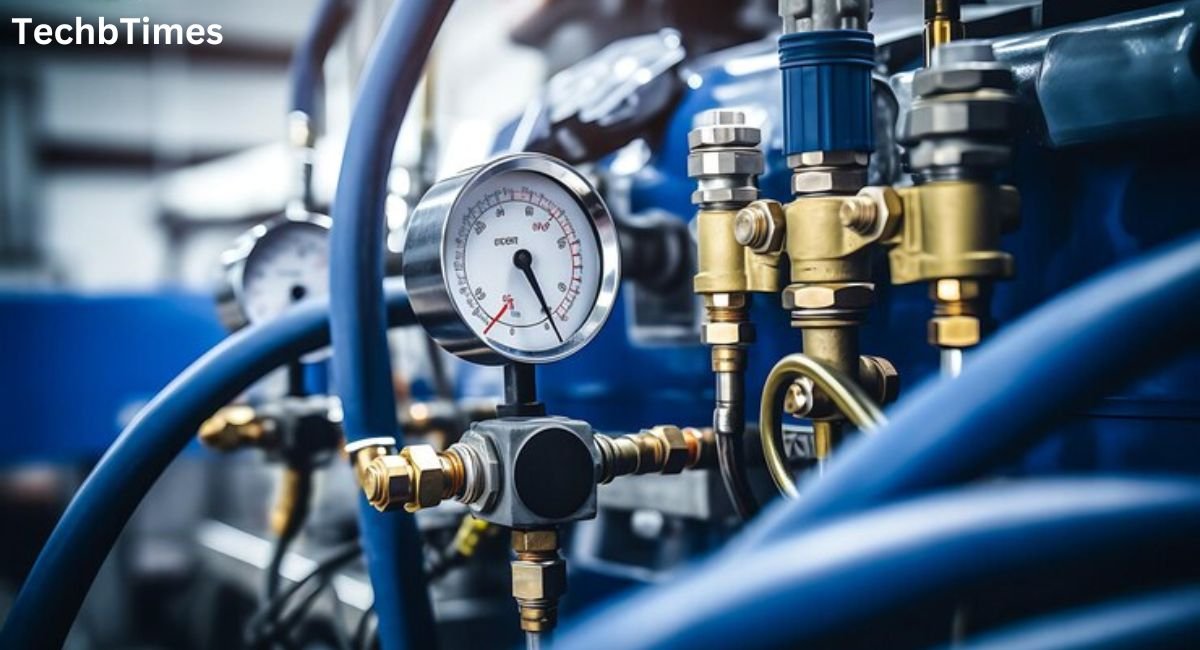The 2004 Buick Park Avenue is renowned for its comfort, reliability, and smooth driving experience. However, some owners report a peculiar issue: the vehicle stutters or hesitates when cruising at 50-55 mph. This mid-speed stuttering can be frustrating and may indicate underlying mechanical or electrical problems. In this article, we’ll explore the common causes and practical solutions to resolve the stuttering issue.
Understanding the Stuttering Issue
The 2004 Park Avenue stuttering at 50-55 mph often feels like a hesitation or jerking motion. This issue is usually most noticeable when maintaining a steady speed or lightly accelerating. While the problem can be unsettling, it’s often caused by specific, identifiable factors.
Common Causes of Stuttering at 50-55 MPH
1. Transmission Problems
The transmission plays a crucial role in maintaining smooth acceleration. Issues such as a failing torque converter clutch (TCC) or transmission solenoid can cause stuttering at mid-speeds.
2. Faulty Spark Plugs or Ignition Coils
Worn-out spark plugs or failing ignition coils can result in misfires, which manifest as stuttering during acceleration or cruising.
3. Dirty or Faulty Mass Air Flow (MAF) Sensor
The MAF sensor measures the air entering the engine. If it’s dirty or malfunctioning, it can cause hesitation or stuttering at specific speeds.
4. Clogged Fuel Injectors
Fuel injectors deliver fuel to the engine. If they’re clogged or not functioning properly, the engine may not receive the correct fuel-air mixture, leading to stuttering.
5. Failing Throttle Position Sensor (TPS)
The TPS monitors the throttle’s position and communicates with the engine control module (ECM). A failing TPS can cause inconsistent acceleration and stuttering.
6. Low Transmission Fluid
Insufficient or degraded transmission fluid can lead to stuttering, particularly at mid-speeds.
7. Exhaust System Restrictions
Issues such as a clogged catalytic converter can restrict exhaust flow, affecting engine performance and causing stuttering.
8. Engine Mount Wear
While less common, worn engine mounts can amplify the sensation of stuttering, especially during acceleration.
9. Software or ECU Issues
Sometimes, the stuttering may be related to outdated software in the vehicle’s ECU. A reflash or update can resolve this issue.
10. Vacuum Leaks
Vacuum leaks disrupt the air-fuel mixture, causing stuttering or hesitation at various speeds.
Diagnosing the Problem
1. Use an OBD-II Scanner
An OBD-II scanner can help identify error codes related to the engine or transmission. Common codes for stuttering include P0300 (random misfire) and P0420 (catalyst system efficiency below threshold).
2. Inspect the Spark Plugs and Ignition Coils
Remove and inspect the spark plugs for wear or damage. Check the ignition coils for cracks or weak connections.
3. Test the MAF Sensor
Clean the MAF sensor using a dedicated cleaner and test its functionality.
4. Check Fuel Pressure
Low fuel pressure may indicate a failing fuel pump or clogged injectors. Use a fuel pressure gauge to measure the system’s pressure.
5. Inspect the Transmission
Examine the transmission fluid for discoloration or a burnt smell. A professional inspection may be necessary for deeper issues.
6. Check for Vacuum Leaks
Spray carburetor cleaner around vacuum hoses and intake manifold gaskets while the engine is running. A change in engine RPM indicates a leak.
Solutions to Fix the Stuttering Issue
1. Replace Spark Plugs and Ignition Coils
If misfires are the cause, replacing spark plugs and ignition coils can restore smooth engine performance.
2. Clean or Replace the MAF Sensor
A dirty MAF sensor can be cleaned with a dedicated cleaner. If cleaning doesn’t resolve the issue, replace the sensor.
3. Service the Transmission
Flush and replace the transmission fluid if it’s old or degraded. For deeper issues, consider repairing or replacing the torque converter.
4. Clean or Replace Fuel Injectors
Use a fuel injector cleaner to remove minor clogs. Severely clogged injectors may need professional cleaning or replacement.
5. Replace the Throttle Position Sensor
If the TPS is failing, replacing it can resolve acceleration inconsistencies and stuttering.
6. Address Exhaust Restrictions
Inspect the catalytic converter and exhaust system for blockages. Replace any damaged components.
7. Update the ECU Software
Visit a dealership or mechanic to check for software updates for the vehicle’s ECU.
8. Repair Vacuum Leaks
Replace damaged vacuum hoses or gaskets to restore the proper air-fuel mixture.
Preventive Maintenance for Smooth Driving
1. Regular Tune-Ups
Schedule regular tune-ups to keep the engine, ignition system, and transmission in optimal condition.
2. Use Quality Fuel
Using high-quality fuel can prevent carbon buildup in the engine and fuel system.
3. Replace Filters
Regularly replace air, fuel, and transmission filters to ensure optimal performance.
4. Monitor Fluid Levels
Check and maintain proper levels of transmission, engine, and coolant fluids.
5. Inspect Belts and Hoses
Worn belts and hoses can indirectly affect engine performance and contribute to stuttering.
Cost of Repairs for Stuttering Issues
1. Spark Plugs and Ignition Coils
- Spark plug replacement: $100–$200
- Ignition coil replacement: $150–$300
2. Transmission Repairs
- Fluid flush: $100–$200
- Torque converter repair: $600–$1,000
3. Fuel System Repairs
- Injector cleaning: $50–$100
- Injector replacement: $300–$600
4. Sensor Replacements
- MAF sensor: $200–$400
- TPS: $100–$200
5. Catalytic Converter Replacement
- $900–$2,500, depending on the model and labor costs.
When to Seek Professional Help
While many stuttering issues can be resolved with DIY solutions, some problems require professional expertise. If the issue persists after basic repairs or if you lack the tools and knowledge for advanced diagnostics, consult a certified mechanic.
FAQs
What causes the 2004 Park Avenue to stutter at 50-55 mph? Common causes include transmission issues, spark plug misfires, dirty MAF sensors, and clogged fuel injectors.
Can I fix the stuttering issue myself? Yes, basic repairs such as replacing spark plugs, cleaning the MAF sensor, and using fuel injector cleaner can often resolve the issue.
How do I know if the transmission is the problem? Signs of transmission issues include delayed shifting, strange noises, and changes in transmission fluid color or smell.
Is stuttering harmful to the vehicle? Yes, if left unresolved, stuttering can lead to more significant problems, such as engine or transmission damage.
How much does it cost to fix stuttering at mid-speeds? Repair costs vary depending on the issue but generally range from $100 for basic fixes to over $2,000 for complex repairs.
Can software updates fix the stuttering issue? Yes, in some cases, updating the ECU software can resolve stuttering caused by outdated programming.
Conclusion
The 2004 Park Avenue stuttering at 50-55 mph is a common issue with various potential causes, from ignition system faults to transmission problems. By understanding the root causes and taking preventive measures, you can restore your Buick’s smooth performance and enjoy a hassle-free driving experience.
CBD Marketing Strategies That Actually Work Tips from Industry Experts











